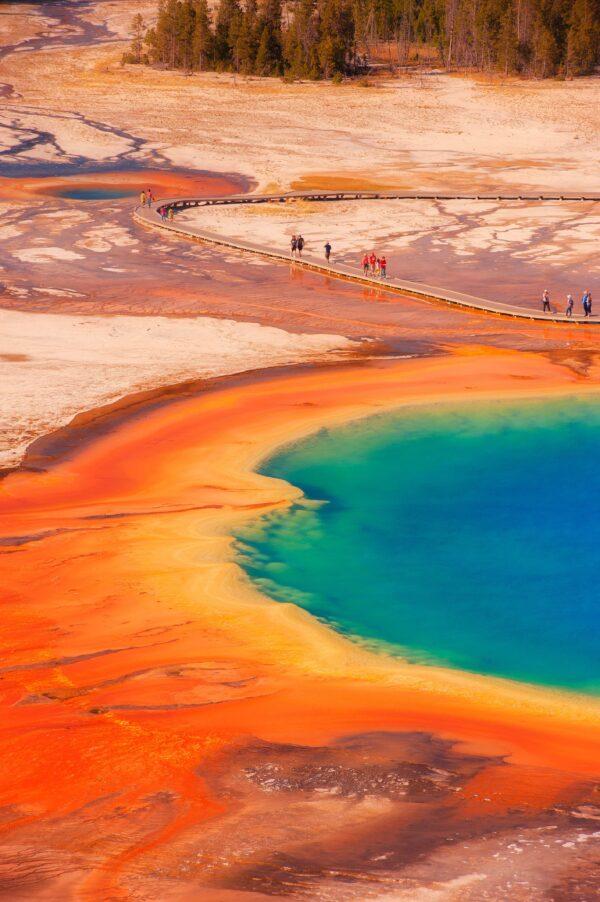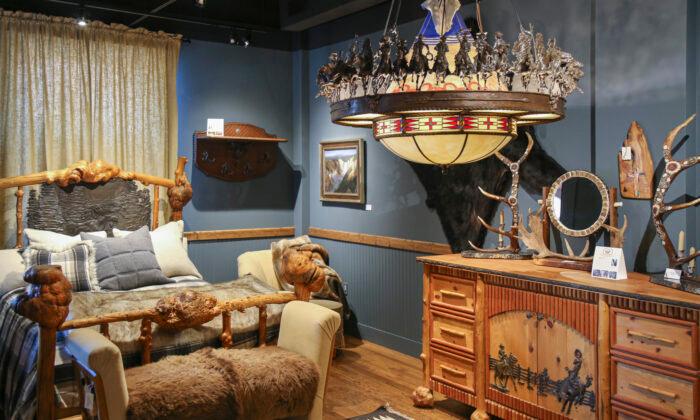The introduction of the train at Yellowstone National Park prefaced the increase in visitors to America’s first national park, which is celebrating 150 years in 2022. The opening of the Gardiner, Montana, train station in 1902 near the North Entrance made it easier to access the park and prompted a rise in tourism. Although the park was established in 1872, it wasn’t until 1886 that stagecoaches became the primary transportation through the park. At the train station, visitors would board a stagecoach heading for the Mammoth area of the park. From there, a five-day tour took guests to various—albeit primitive compared to today’s options—lodging and dining, with regular stops for sightseeing of the geysers, other hydrothermal features, and wildlife. Stagecoaches took guests until 1917, when park transportation converted to motorized vehicles.

The end of the stagecoach era began in late 1915 after the addition of private cars into Yellowstone. Leslie Quinn, an interpretive specialist with Yellowstone National Park Lodges, said, “At the time, they were still running all the big tours on stagecoaches, but people in their private cars could also run around Yellowstone, and it was a disaster. The cars scared the horses. … So, ultimately, they had to block the park off into two-hour segments of the day where horses are on the road. Then, they all get off the roads, and for two hours the cars are on the road. It would rotate like this every two hours, and the system wasn’t working well.” To fix the dilemma, the following summer the park eliminated stagecoaches and switched to motor coaches to follow the route.
When the stagecoach tours were replaced by motor coaches, Quinn said that unfortunately, a majority of the stagecoaches were destroyed, making any remaining ones valuable antiques. “At that time, they had over 100 stagecoaches, and nobody needed them anymore. … They took the stagecoaches to what’s called Swan Lake Flat,” which is located about 5 miles south of Mammoth. “They burned them all in one spot. As each one would finally burn to the ground, they would roll the next one on top of the embers.”

Although the train station was demolished in 1954, visitors today can still follow a modified version of the five-day stagecoach route taken through Yellowstone. Follow the stagecoach route below, or board a replica stagecoach or the modern motor coaches for a guided experience through the park.
Day 1 Tourists arrived at the Gardiner train station to board the “Tally-Ho” six-horse stagecoaches that seated up to 36 guests. After a short ride to the Mammoth Hot Springs Hotel, guests were free to explore the mammoth terraces before spending the night at the hotel.
The hotel still exists, and guests can stay in the original wing that was built in 1911 or in renovations built in 1936. Choose from a standard room, a suite, or one of the cabins.


Day 2
Early travelers would board a second, smaller, four-horse stagecoach the following morning. After a short ride in the open-air stagecoach designed to provide the best views, guests arrived at the Norris Geyser Basin for lunch. There, they would enjoy many multi-colored thermal features, wildlife, and the most popular Yellowstone geyser, Echinus.
Following lunch and some exploring, it was back on the stagecoach for the Fountain Hotel, including a luxury at the time: hot baths from piped geyser water.
Today, the Fountain Hotel is no longer there. Guests can still pack a lunch and stop at Norris Geyser Basin to view the oldest and most dynamic of Yellowstone’s thermal areas. Find rare acidic geysers as well as the tallest geyser in the world, Steamboat Geyser. Then, since the Fountain Hotel is gone, drive to Old Faithful Inn.

Day 3
Old Faithful Inn opened in 1904. Prior to that, stagecoach visitors would stop at Old Faithful for lunch, but once the hotel opened, it allowed guests to spend one or more nights there. The luxury hotel with fine dining and hot and cold running water was a great attraction at the park.
Guests can still stay at Old Faithful Inn with its majestic wood interior—it’s considered the largest log structure in the world. Rest in the lobby with its massive stone fireplace and hand-crafted copper, wood, and wrought iron clock, plus antique furniture situated along the floor railings of the open floor plan.

Day 4
On the fourth morning, guests were back onto the stagecoaches to visit West Thumb Geyser Basin for a stop at a lunch station and to view the geyser. After lunch, the tour continued to Lake Yellowstone Hotel.
Guests today can still stay at Lake Yellowstone Hotel. Sit outside on the deck where you’ll possibly see wildlife, watch the sunset from the indoor lounge, or take a boat ride at this lakefront hotel. It’s the oldest Yellowstone hotel still in operation.
Day 5
The final day of the stagecoach tour took visitors to the Canyon Hotel. It was a short trip, and guests had time to visit the canyon and waterfalls. The sprawling resort was unfortunately lost to fire in 1960. Guests today can stay at the Canyon Lodge & Cabins, just a half-mile from the Grand Canyon of Yellowstone and its Lower Falls.






